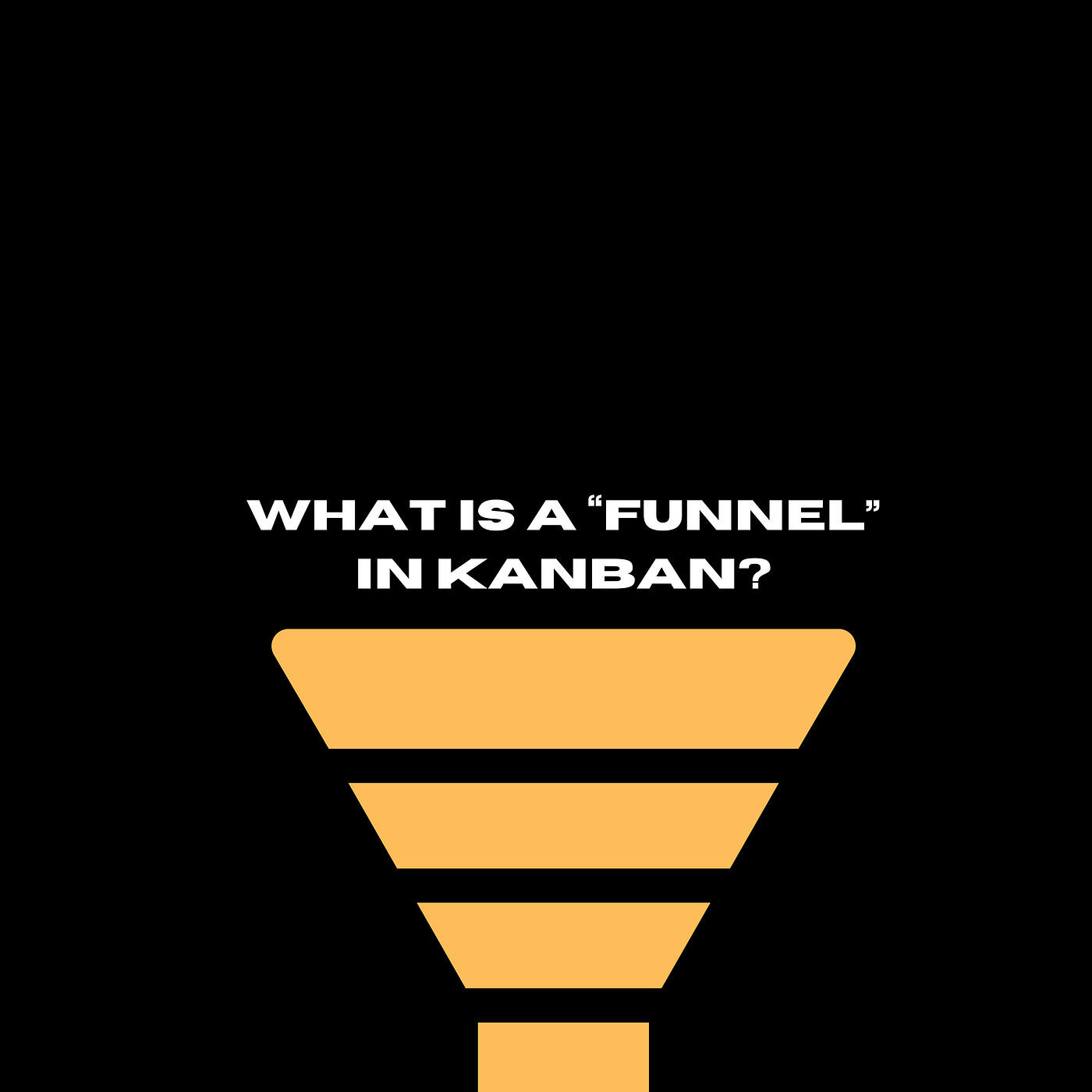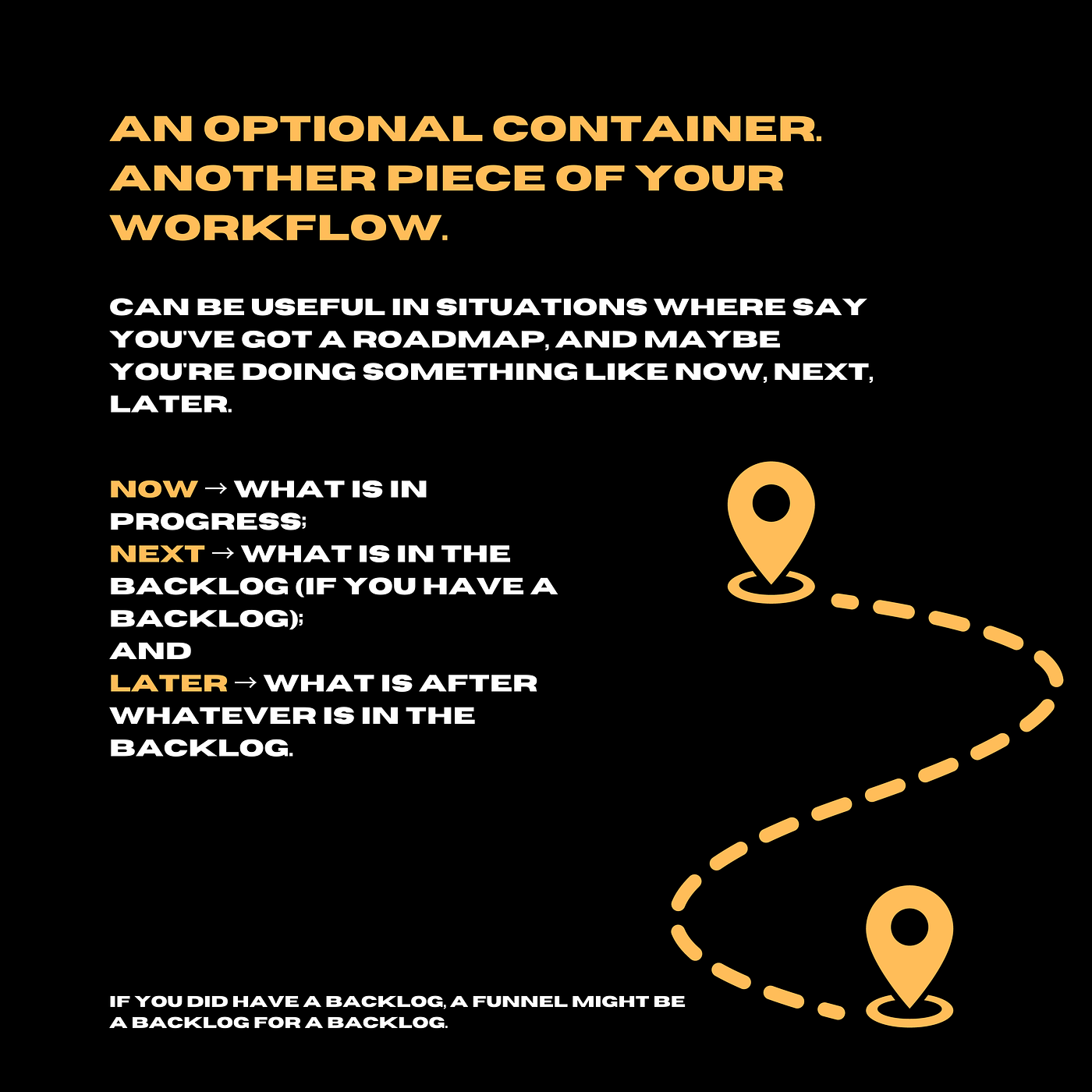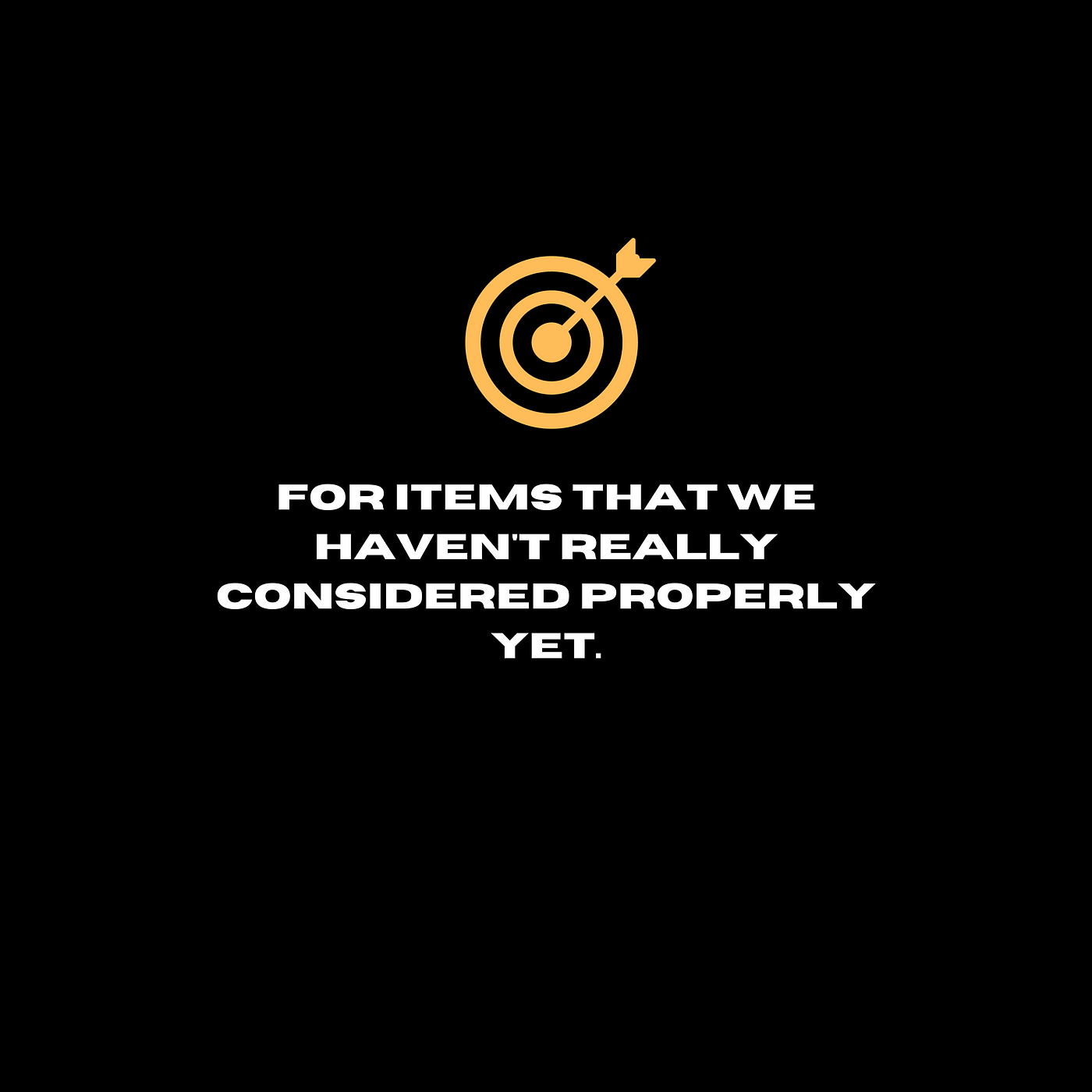
What is a “funnel” in Kanban?
Share

In the Kanban Guide, we define Kanban. We bring Kanban down to the minimal aspects, and we hope you find that helpful.
In doing so, we made a lot of things optional. One of the things that is optional in the definition of workflow is a backlog. You do not have to have a backlog on a definition of workflow, and I wrote about defining your workflow in a previous article (here)

Funnel is another optional container, if you like, another piece of your workflow that you can have. If you did have a backlog, a funnel might be a backlog for a backlog.
So, it can be helpful in situations where you’ve got a roadmap, and maybe you’re doing something like now, next, or later.
- now → would be whatever is in progress;
- next → might be what is in the backlog (if you have a backlog); and
- later → might be what is after whatever is in the backlog.
Some might call it a hopper, a pool of ideas; whatever you want to call it is fine.

The general intent behind a funnel is that it’s for items that we haven’t really considered properly yet.
People have submitted some ideas; they are in the funnel. But we don’t know if they will end up in the backlog yet. So if you did have a backlog, if you did have some kind of prioritization, that’s something you can do.
Remember that even if you have a backlog in Kanban, the backlog is not necessarily ordered. So, this whole notion of sequencing a backlog is more a thing for Scrum than Kanban. It’s not something that we necessarily do in Kanban.
Thank you for reading.